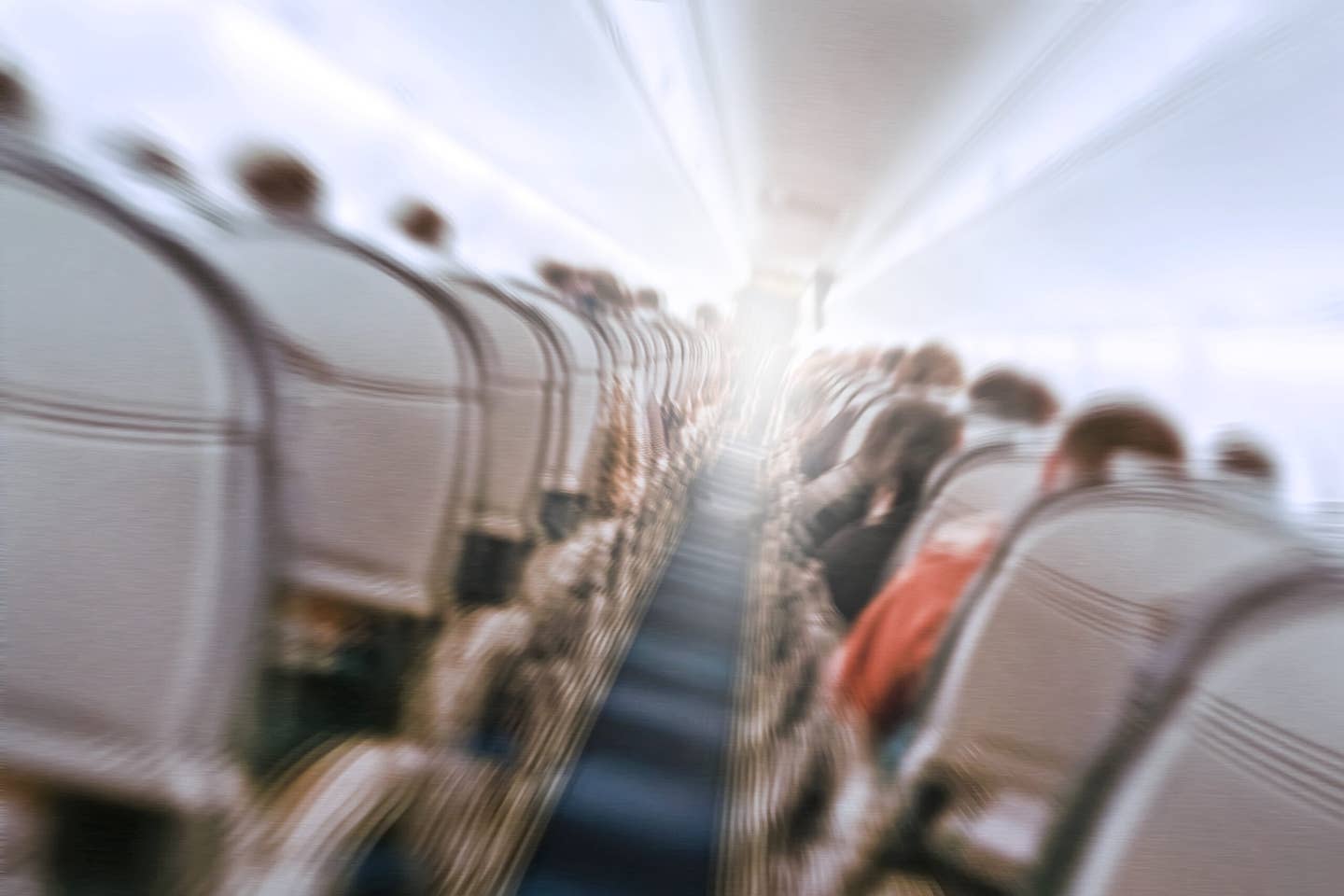Severe Turbulence Blamed in Death Aboard Singapore Airlines Flight
Multiple injuries are reported after the flight drops 6,000 feet from its cruising altitude of approximately 37,000 feet.

[File photo: Adobe Stock]
One person was killed and dozens injured when an airliner encountered severe turbulence on a flight from London to Singapore on Tuesday.
According to aviation officials, Singapore Airlines Flight SQ321 took off from London Heathrow Airport (EGLL) on Monday evening with 211 passengers and 18 crew on board. The flight normally takes 13 hours.
Around 11 hours into the trip, the Boeing 777-300ER dropped from a cruising altitude of approximately 37,000 feet to 31,000 in a few minutes, according to data from Flightradar 24. Photographs taken from inside the aircraft after the event showed the cabin with supplemental oxygen masks and parts of ceiling bulkheads hanging down and personal objects strewn about.
We have finished processing granular ADS-B data sent by #SQ321. Data indicates the turbulence event occurred at 07:49 UTC. https://t.co/8taJrD7JVB pic.twitter.com/tOM6hG2zjc
— Flightradar24 (@flightradar24) May 21, 2024
According to the New York Times, the incident occurred as the aircraft was traveling across Myanmar as there were storms in the region. The aircraft diverted to Bangkok.
The passenger who was killed was identified as a 73-year-old man from Britain. Authorities have not released the cause of death, however, it was noted that the man had a heart condition. His wife was also on the airplane and was taken to a local hospital with injuries.
- READ MORE: What Is Turbulence?
Officials stated that 30 passengers and crew were injured, some of them critically. At least 18 were hospitalized.
Boeing said it is standing by to assist if called upon during the investigation.
“We are in contact with Singapore Airlines regarding flight SQ321 and stand ready to support them," a Boeing company spokesperson said in a statement. "We extend our deepest condolences to the family who lost a loved one, and our thoughts are with the passengers and crew.”
The 100 passengers who were not injured in the event would be flown to Singapore on Tuesday, said Kittipong Kittikachorn, director of Bangkok’s Suvarnabhumi Airport (VTBS).
Turbulence leading to serious injuries is rare, according to FAA data, with 163 having been reported since 2009.
The FAA defines turbulence as "air movement created by atmospheric pressure, jet streams, air around mountains, cold or warm weather fronts, or thunderstorms." It is often unexpected and can happen in clear skies as well as in clouds. Turbulence is often experienced as a sudden jolt or feeling that the aircraft has dropped rapidly and unexpectedly. Passengers and flight crew who are not buckled in can hit the ceiling violently, leading to injury.
The FAA offers guidance for travelers to avoid injuries from turbulence:
- Listen to the pilots and flight attendants. FAA regulations require passengers to be seated with their seat belts fastened whenever the seat belt sign is illuminated during flight.
- Pay attention to the safety briefing at the beginning of your flight and read the safety briefing card.
- Use an approved child safety seat or device if the passenger is under 2 years old.
- Prevent inflight injuries by adhering to the airline’s carry-on restrictions.

Sign-up for newsletters & special offers!
Get the latest FLYING stories & special offers delivered directly to your inbox






